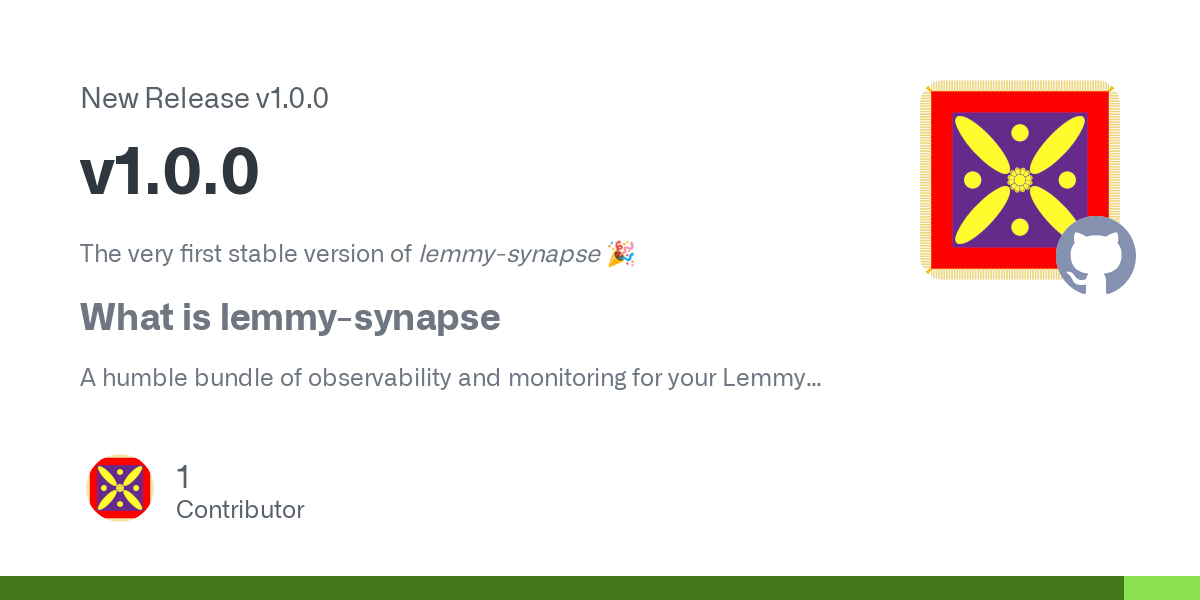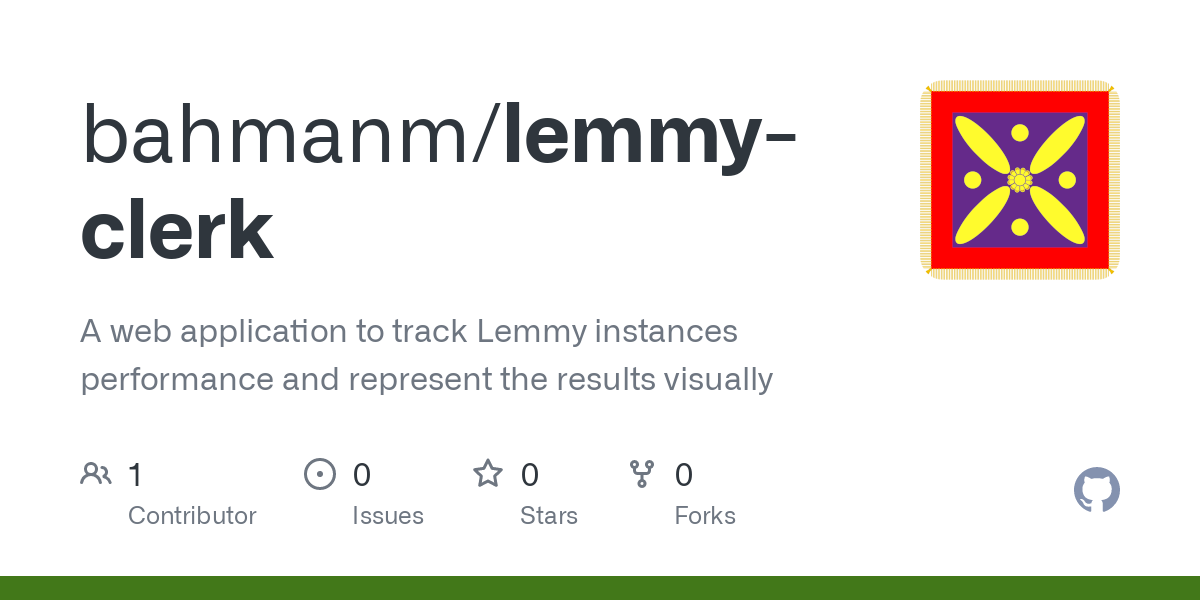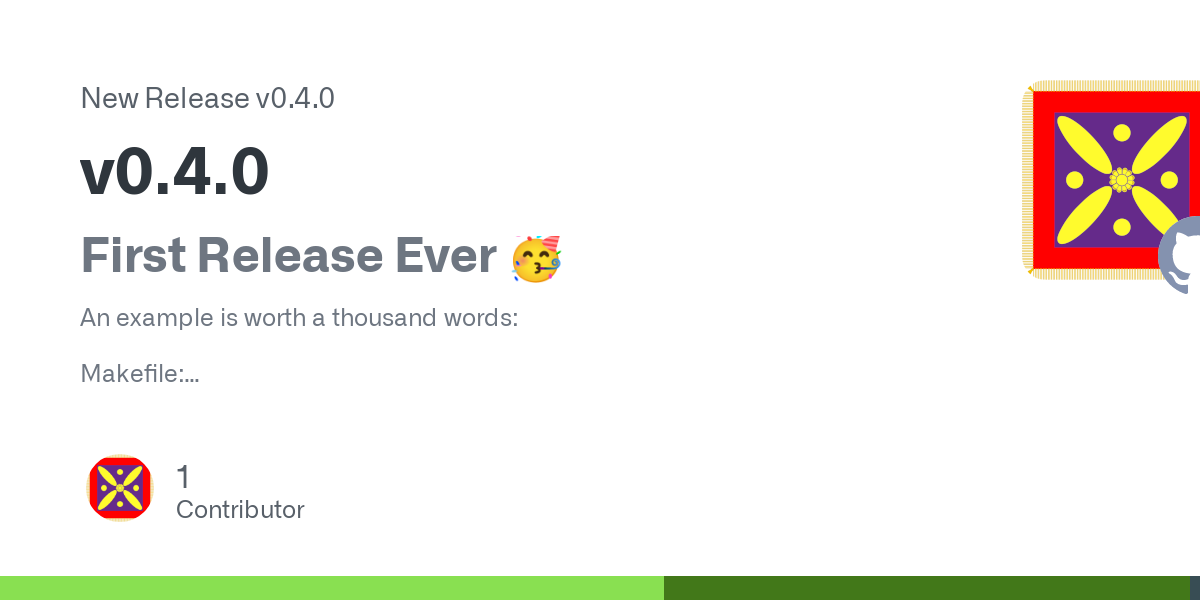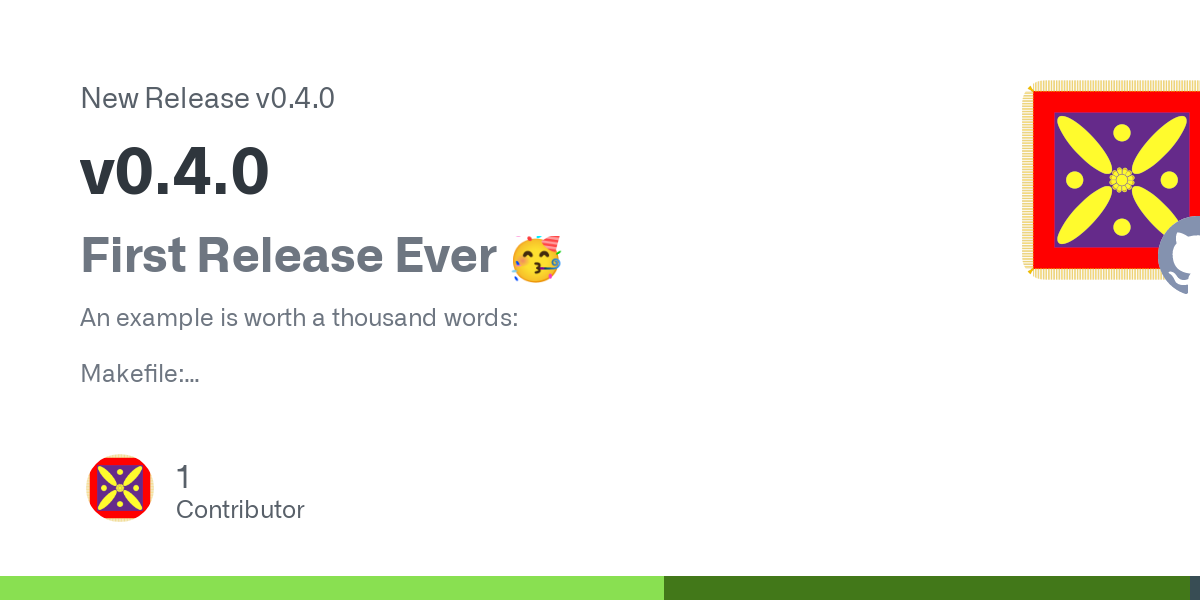bahmanm
Husband, father, kabab lover, history buff, chess fan and software engineer. Believes creating software must resemble art: intuitive creation and joyful discovery.
Views are my own.
- 17 Posts
- 75 Comments
I didn’t like the capitalised names so configured xdg to use all lowercase letters. That’s why
~/optfits in pretty nicely.You’ve got a point re
~/.local/optbut I personally like the idea of having the important bits right in my home dir. Here’s my layout (which I’m quite used to now after all these years):$ ls ~ bin desktop doc downloads mnt music opt pictures public src templates tmp videos workspacewhere
binis just a bunch of symlinks to frequently used apps fromoptsrcis where i keep clones of repos (but I don’t do work insrc)workspaceis a where I do my work on git worktrees (based offsrc)
Thanks! So much for my reading skills/attention span 😂
Which Debian version is it based on?
RE Go: Others have already mentioned the right way, thought I’d personally prefer
~/opt/goover what was suggested.
RE Perl: To instruct Perl to install to another directory, for example to
~/opt/perl5, put the following lines somewhere in your bash init files.export PERL5LIB="$HOME/opt/perl5/lib/perl5${PERL5LIB:+:${PERL5LIB}}" export PERL_LOCAL_LIB_ROOT="$HOME/opt/perl5${PERL_LOCAL_LIB_ROOT:+:${PERL_LOCAL_LIB_ROOT}}" export PERL_MB_OPT="--install_base \"$HOME/opt/perl5\"" export PERL_MM_OPT="INSTALL_BASE=$HOME/opt/perl5" export PATH="$HOME/opt/perl5/bin${PATH:+:${PATH}}"Though you need to re-install the Perl packages you had previously installed.

 3·1 year ago
3·1 year agoFirst off, I was ready to close the tab at the slightest suggestion of using Velocity as a metric. That didn’t happen 🙂
I like the idea that metrics should be contained and sustainable. Though I don’t agree w/ the suggested metrics.
In general, it seems they are all designed around the process and not the product. In particular, there’s no mention of the “value unlocked” in each sprint: it’s an important one for an Agile team as it holds Product accountable to understanding of what is the $$$ value of the team’s effort.
The suggested set, to my mind, is formed around the idea of a feature factory line and its efficiency (assuming it is measurable.) It leaves out the “meaning” of what the team achieve w/ that efficiency.
My 2 cents.
Good read nonetheless 👍 Got me thinking about this intriguing topic after a few years.

 4·1 year ago
4·1 year agoThis is fantastic! 👏
I use Perl one-liners for record and text processing a lot and this will be definitely something I will keep coming back to - I’ve already learned a trick from “Context Matching” (9) 🙂
That was my case until I discovered that GNU tar has got a pretty decent online manual - it’s way better written than the manpage. I rarely forget the options nowadays even though I dont’ use
tarthat frequently.
TBH I use whatever build tool is the better fit for the job, be it Gradle, SBT or Rebar.
But for some (presumably subjective) reason, I like GNU Make quite a lot. And whenever I get the chance I use it - esp since it’s somehow ubiquitous nowadays w/ all the Linux containers/VMs everywhere and Homebrew on Mac machines.
A bit too long for my brain but nonetheless it written in plain English, conveys the message very clearly and is definitely a very good read. Thanks for sharing.

 7·1 year ago
7·1 year agoThat single line of Lisp is probably
(defmacro generate-compiler (...) ...)which GCC folks call every time they decide to implement a new compiler 😆
When i read the title, my immediate thought was “Mojolicious project renamed? To a name w/ an emoji!?” 😂
We plan to open-source Mojo progressively over time
Yea, right! I can’t believe that there are people who prefer to work on/with a closed source programming language in 2023 (as if it’s the 80’s.)
… can move faster than a community effort, so we will continue to incubate it within Modular until it’s more complete.
Apparently it was “complete” enough to ask the same “community” for feedback.
I genuinely wonder how they managed to convince enthusiasts to give them free feedback/testing (on github/discord) for something they didn’t have access to the source code.
PS: I didn’t downvote. I simply got upset to see this happening in 2023.

 1·1 year ago
1·1 year agoI’ve been using sdkman for about a decade now and am totally pleased w/ it. It does a very good job of managing JDK versions for you and much more, eg SBT, Gradle, Scala, Groovy, Leiningen, SpringBoot, …
Now, technically you could use sdkman in your CI/CD pipeline too but I’d find it a strong smell. I’ve always used dedicated images pre-configured for a particular JDK version in the pipeline.

 8·1 year ago
8·1 year agoI work primarily on the JVM & the projects (personal/corporate) I work w/ can be summarised as below:
- Building & running the repo is done on the host using an SCM (software configuration management tool) such as Gradle or SBT.
- The external dependencies of the repo, such as Redis, are managed via a
docker-compose.yml. - The README contains a short series of commands to do different tasks RE (1)
However one approach that I’ve always been fond of (& apply/advocate wherever I can) is to replace (3) w/ a
Makefilecontaining a bunch of standard targets shared across all repos, egtest,integration-test. Then Makefiles are thinly customised to fit the repo’s particular repo.This has proven to be very helpful wrt congnitive load (and also CI/CD pipelines): ALL projects, regardless of the toolchain, use the same set of commands, namely
make testmake integration-testmake compose-upmake run
In short (quoting myself here):
Don’t repeat yourself. Make Make make things happen for you!
Since I haven’t heard/read about any bugs, I plan to release v5.0.0 on the 13th (😬)
I’ll keep this post, well, posted 🙂
Recently, I’ve found myself posting more often on Mastodon a Lemmy & blog way less - indeed credits go to Fediverse and the mods for making it a safe and welcoming place ❤
Here’s my latest one: https://www.bahmanm.com/2023/07/firefox-profiles-quickly-replicate-your-settings.html
It’s not self-hosted, rather I’m using Google’s blogspot. I used to host my own website and two dozens of clients’ and friends’ until a few years ago (using Plone and Zope.) But at some point, my priorities changed and I retired my rock-solid installations and switched to blogspot.

 12·1 year ago
12·1 year agoI agree w/ you RE posts looking horrible 👍
Though I’d say for one-liners like this, it’s mostly OK. It gets really messy when folks post more complex posts and mention and tag a bunch of times.

 1·1 year ago
1·1 year agoAny error logs? Try launching things from the terminal and note down any messages that are printed there.












“Announcment”
It used to be quite common on mailing lists to categorise/tag threads by using subject prefixes such as “ANN”, “HELP”, “BUG” and “RESOLVED”.
It’s just an old habit but I feel my messages/posts lack some clarity if I don’t do it 😅